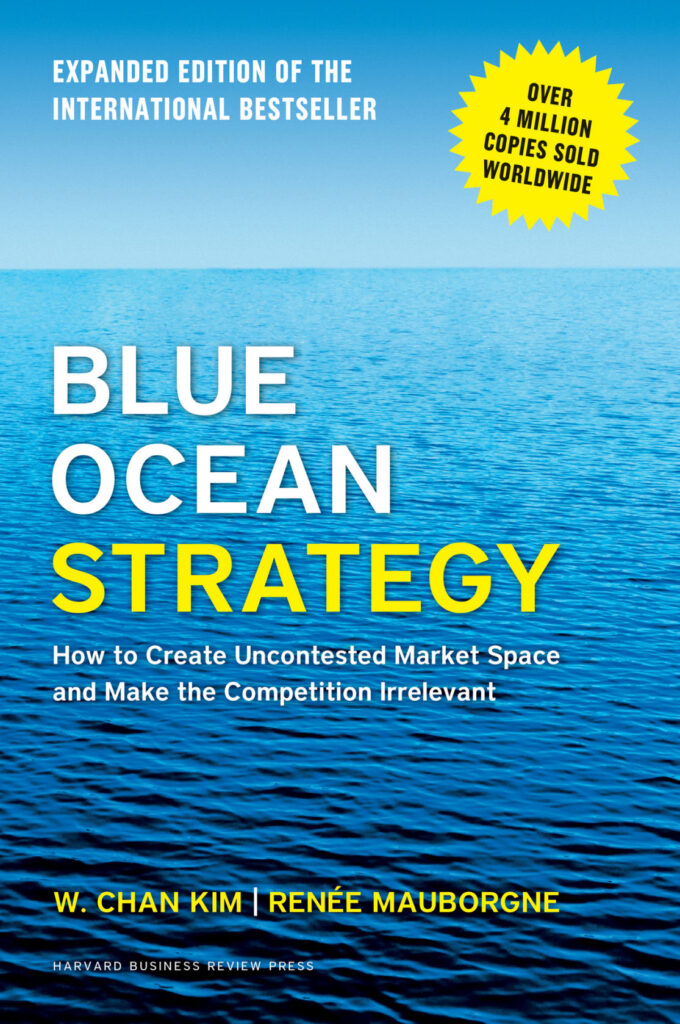Now Reading: Must-Read For Everyone Who Starts a StartUp: Blue Ocean Strategy
- 01
Must-Read For Everyone Who Starts a StartUp: Blue Ocean Strategy
Must-Read For Everyone Who Starts a StartUp: Blue Ocean Strategy

Everyone who starts a business should read a lot. Business books with best practices, motivational literature, and blogs related to the sphere of your interest. I shouldn’t tell you that reading stimulates personal and professional growth. I am sure you know it. But I would like to tell you about the literature that helps me to develop my own projects. The book that changed my life and business vision.
The number one book I would like to recommend is Blue Ocean Strategy by W. Chan Kim and Renee Mauborgne.
What does the ‘blue ocean’ mean? The authors of the bestseller use the term ‘ocean’ to explain market relations.
There are people with similar needs.
There are companies satisfying these needs similarly.
These people and companies have commercial relations where people pay for the product supplied by the company. It is called the market.
There are tons of different markets: the market of mobile technology, handmade, the market of pizza, textile market and the market of high fashion, the educational market, and many others you can only imagine.
So, if you are the only company in the market and have lots of clients, it is great! You satisfy the client’s needs, and define the rules of the game and market price.
This means ‘blue ocean’ – uncontested market space.In a while, other companies see your success and start creating similar products but providing people with lower prices and better quality. Your competitors enter the game and the blood will run.
This means ‘red ocean’.
The blue ocean strategy aims to create a product that creates an uncontested marketplace.
So, what is the blue ocean strategy?
Read also: 6 basic steps to start a startup and change your life
Do not compete
Try not to follow the rules of your competitors by making something similar to their product. The strategy of blue ocean is to create your own market, your ‘blue ocean’ and you win.
Any revolutionary product is in a blue ocean market. Steve Jobs managed to create a thriving commercial tablet market, though tablets had already existed before.
How to Create a Blue Ocean
1. Learn everything about your customers
Blue ocean strategy teaches that entrepreneurs should concentrate on non-customers and understand how to convert them into customers.
Australian company Casella Wines analyzed the portrait of Americans who do not drink wine. It was found out that the middle and lower classes do not drink wine because people cannot understand its taste and regional differences in the product. As a result, the company created a special light fruit wine at a lower price. Casella Wines became one of the most popular wine brands in the USA.
2. Analyze market stereotypes
Think out-of-box and analyze the market differently. Everyone knows that flying is comfortable and fast but not very cheap. Make it cheaper, but without all the additional services.
Competitiveness takes place when people think the same way. Try to take a fresh look at what the modern market offers and change the concept of your product.
3. Add the emotional part to the product
A lot of well-known brands became popular due to their emotional value. Here are some Blue Ocean strategy examples:
It was a simple coffee shop and grew into a club uniting people with common interests (Starbucks).
It was a brand of elite and expensive watches and became one of the most popular youth watch brands (Swatch).
Read also: How to overcome failure in entrepreneurship
Blue Ocean Strategy Summary
So, let’s sum up the key points of a blue ocean strategy.
- Keep your main focus on creating a new market instead of spending resources to beat the competition.
- Analyze your customers’ needs and understand the market
- Add more value and focus on the emotional connection to the product
So, in conclusion, I would like to stress, that if you are a startup founder who has just started the way to that big business world, I strongly recommend you to pay attention to this book. And feel free to share your thoughts in the comments below.
Tetiana is a business coach and owner of IStartHub, a business media for ambitious female entrepreneurs and small business owners.

















